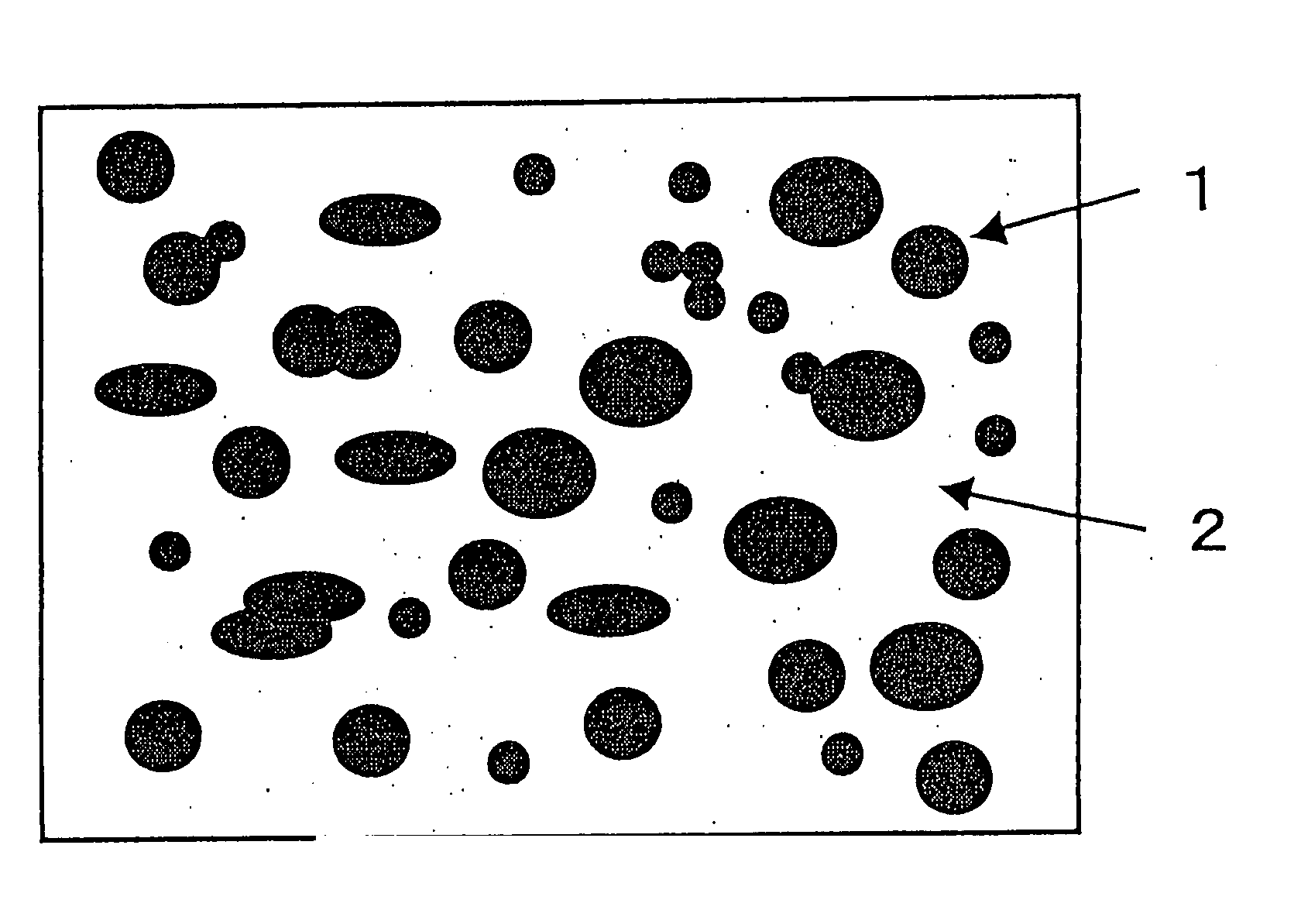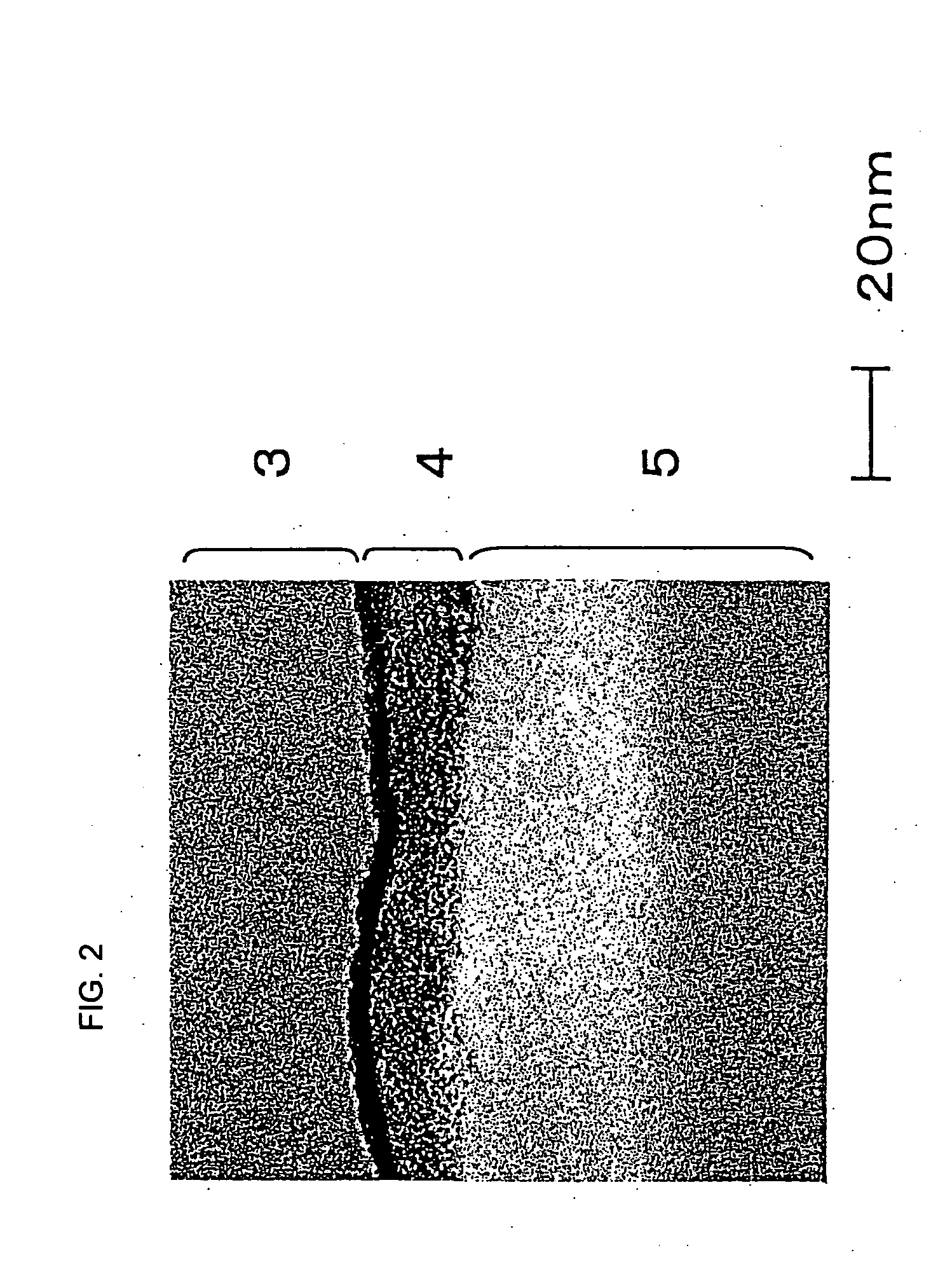Layered film and process for producing layered film
a technology of layered film and film processing, applied in the field of laminated film, can solve the problems of deterioration of ease of handling, electric shock and explosion, and the inability of biaxially oriented polyester films to have antistatic properties,
- Summary
- Abstract
- Description
- Claims
- Application Information
AI Technical Summary
Problems solved by technology
Method used
Image
Examples
example 1
PET pellets (intrinsic viscosity 0.63 dl / g) containing 0.015 percent by weight of colloidal silica having an average particle diameter of 0.4 μm and 0.005 percent by weight of colloidal silica having an average particle diameter of 1.5 μm were adequately vacuum-dried and, thereafter, were supplied to an extruder. The pellets were melted at 285° C., and were extruded from a T-die into the shape of a sheet. The resulting sheet was wound around a mirror-finished casting drum having a surface temperature of 25° C. by the use of an electrostatic casting method, followed by cooling and solidifying. The resulting non-stretched film was heated to 92° C., and was stretched by 3.3 times in a longitudinal direction, so that a monoaxially stretched film was prepared. This film was subjected to a corona discharge treatment in air in order that the wetting tension of the base film became 55 mN / m, and the treated surface was coated with a laminated layer-forming coating solution described below. ...
example 2
PET pellets (intrinsic viscosity 0.63 dl / g) containing 0.015 percent by weight of colloidal silica having an average particle diameter of 0.4 μm and 0.005 percent by weight of colloidal silica having an average particle diameter of 1.5 μm were adequately vacuum-dried and, thereafter, were supplied to an extruder. The pellets were melted at 285° C., and were extruded from a T-die into the shape of a sheet. The resulting sheet was wound around a mirror-finished casting drum having a surface temperature of 25° C. by the use of an electrostatic casting method, followed by cooling and solidifying. The resulting non-stretched film was heated to 92° C., and was stretched by 3.3 times in a longitudinal direction, so that a monoaxially stretched film was prepared. This film was subjected to a corona discharge treatment in air in order that the wetting tension of the base film became 55 mN / m, and the treated surface was coated with a laminated layer-forming coating solution described below. ...
example 3
A laminated film was prepared as in Example 2 except that Coating solution A2 and Coating solution B3 were used in the laminated layer-forming coating solution in Example 2. The results are shown in Table 1. Excellent transparency, antistatic property, and water resistance were exhibited.
“Laminated Layer-Forming Coating Solution”
Coating Solution A2: a water-based coating solution (“DENATRON” #5002RZ produced by Nagase ChemteX Corporation) in which a polyester resin and a complex composed of polyethylenedioxythiophene / polystyrenesulfonic acid were dispersed in water.
Coating Solution B3: a water-based coating solution in which polyglycerol polyglycidyl ether-based epoxy cross-linking agent (“DENACOL” EX-521 produced by Nagase ChemteX Corporation (molecular weight about 1,000, weight per epoxy equivalent 183, water solubility 100 percent)) serving as an epoxy cross-linking agent was dissolved in water.
A laminated layer-forming coating solution was prepared by mixing the above-...
PUM
| Property | Measurement | Unit |
|---|---|---|
| Temperature | aaaaa | aaaaa |
| Percent by mass | aaaaa | aaaaa |
| Percent by mass | aaaaa | aaaaa |
Abstract
Description
Claims
Application Information
 Login to View More
Login to View More - R&D
- Intellectual Property
- Life Sciences
- Materials
- Tech Scout
- Unparalleled Data Quality
- Higher Quality Content
- 60% Fewer Hallucinations
Browse by: Latest US Patents, China's latest patents, Technical Efficacy Thesaurus, Application Domain, Technology Topic, Popular Technical Reports.
© 2025 PatSnap. All rights reserved.Legal|Privacy policy|Modern Slavery Act Transparency Statement|Sitemap|About US| Contact US: help@patsnap.com



